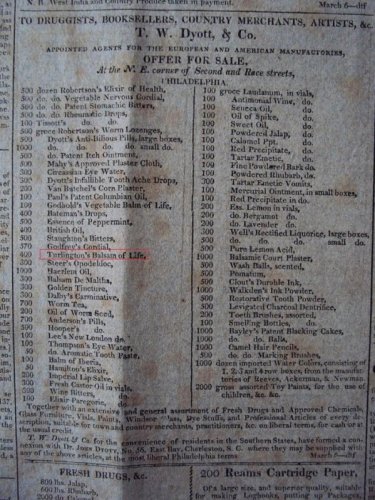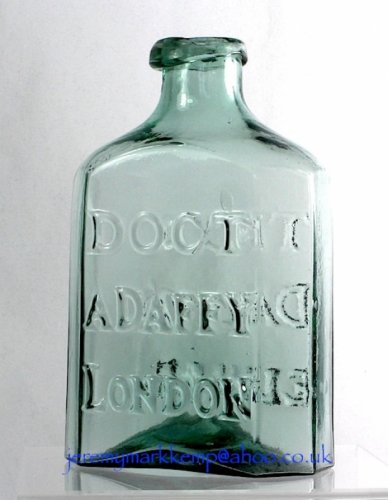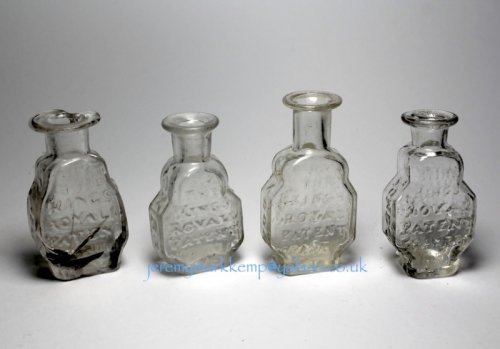Steve/sewell
Well-Known Member
- Joined
- Jan 23, 2010
- Messages
- 6,108
- Reaction score
- 5
- Points
- 0
Dr. Dyott ad from the year 1817 in the The American Centinel and Mercantile Advertiser May 19th 1817 front page.This is a Large inventory ad that had to cost him quite a bit back in the day.Here you can see he spells Balsam correctly.







